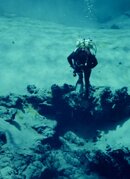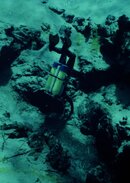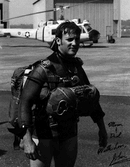Errol,
That is a beautiful video, and I appreciate your posting it. However, it is not my kind of diving.
When we (my wife and I) go to Rainier National Park, we prefer to hike/walk the trails. There are other ways of visiting the park, but to really see what is there we walk it.
In a similar manner, when I dive I prefer to swim. I have never ridden an underwater scooter, even though it looks like a lot of fun. Cost and availability are the main factors. I doubt my wife would want me to spring for the cost of the scooter, especially since I would use it only a few times a year. Perhaps that is the advantage of living in Florida rather than Oregon (though we have some areas that are pretty spectacular too). I have been working on different concepts of underwater swimming, which would be the equivalent of bicycling on land (I do a lot of bicycling too).
A couple of discussion points:
"A man in armor is his armor's slave." Robert Browning
This was the subheading of a chapter titled "Effect of Equipment on Diving Performance," by Glen H. Hgstrom, Ph.D., in the book, Human Performance and SCUBA Diving, Scripps Institution of Oceanography, LaJolla, California, April 10-11, 1970. While you are having a great time flying around the wreck, you are tethered to the scooter, and having to use it all the time. I'm not saying that's not a great dive, only very different from the type of diving I do.
I'm assuming that you were using Nitrox 32% for the dive, but no one had that marked on the cylinders.
Finally, with all that gear on, the need for a scooter to move around is obvious. Without the scooter, it is very difficult to swim efficiently through water with the drag of the gear.
Again, I'm not against this type of diving, only saying it is not my style.
SeaRat
That is a beautiful video, and I appreciate your posting it. However, it is not my kind of diving.
When we (my wife and I) go to Rainier National Park, we prefer to hike/walk the trails. There are other ways of visiting the park, but to really see what is there we walk it.
In a similar manner, when I dive I prefer to swim. I have never ridden an underwater scooter, even though it looks like a lot of fun. Cost and availability are the main factors. I doubt my wife would want me to spring for the cost of the scooter, especially since I would use it only a few times a year. Perhaps that is the advantage of living in Florida rather than Oregon (though we have some areas that are pretty spectacular too). I have been working on different concepts of underwater swimming, which would be the equivalent of bicycling on land (I do a lot of bicycling too).
A couple of discussion points:
"A man in armor is his armor's slave." Robert Browning
This was the subheading of a chapter titled "Effect of Equipment on Diving Performance," by Glen H. Hgstrom, Ph.D., in the book, Human Performance and SCUBA Diving, Scripps Institution of Oceanography, LaJolla, California, April 10-11, 1970. While you are having a great time flying around the wreck, you are tethered to the scooter, and having to use it all the time. I'm not saying that's not a great dive, only very different from the type of diving I do.
I'm assuming that you were using Nitrox 32% for the dive, but no one had that marked on the cylinders.
Finally, with all that gear on, the need for a scooter to move around is obvious. Without the scooter, it is very difficult to swim efficiently through water with the drag of the gear.
Again, I'm not against this type of diving, only saying it is not my style.
SeaRat









